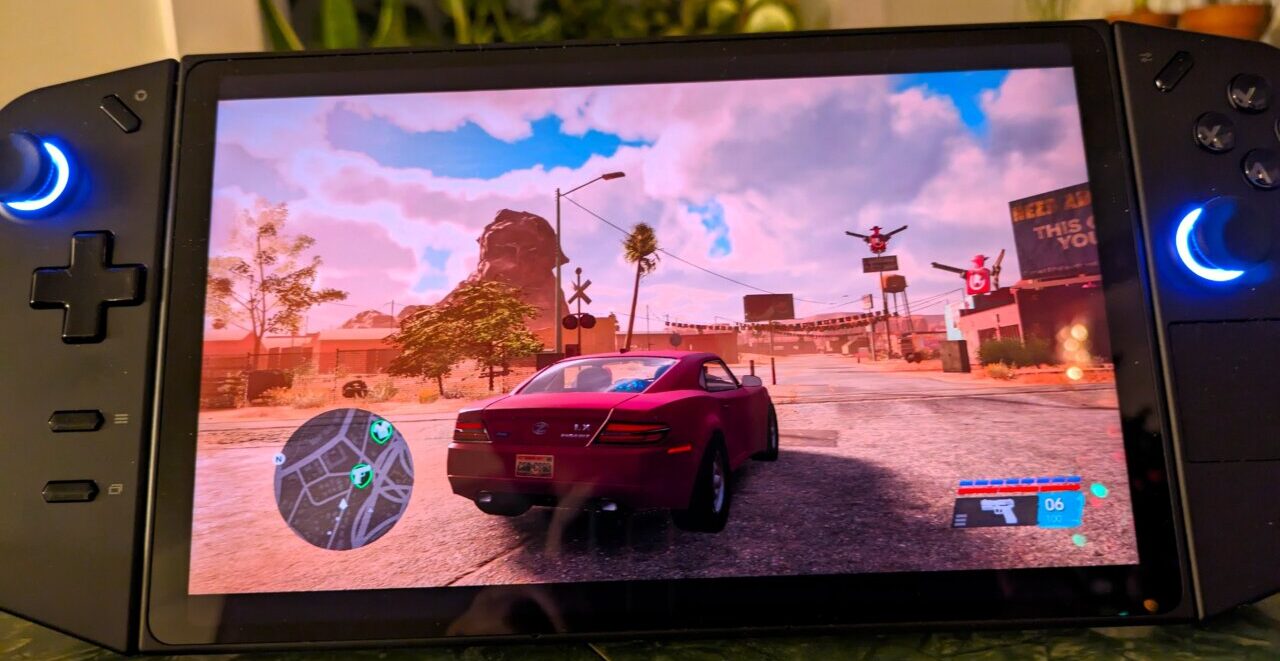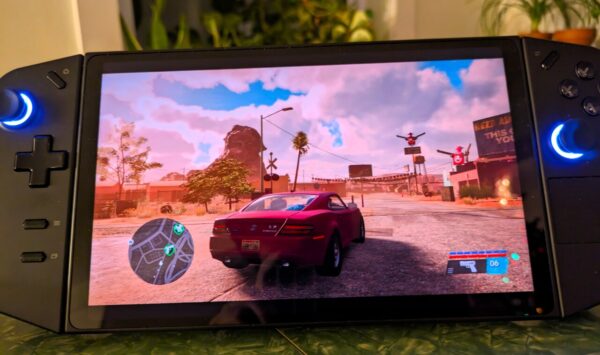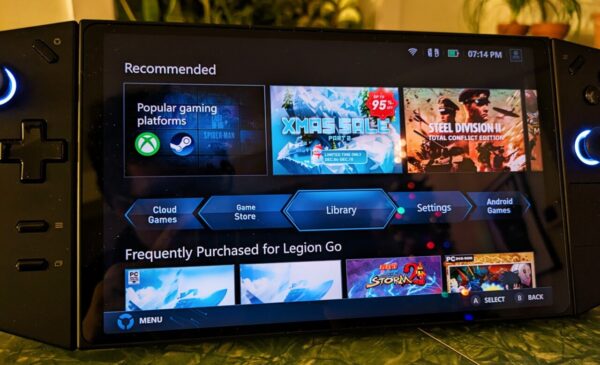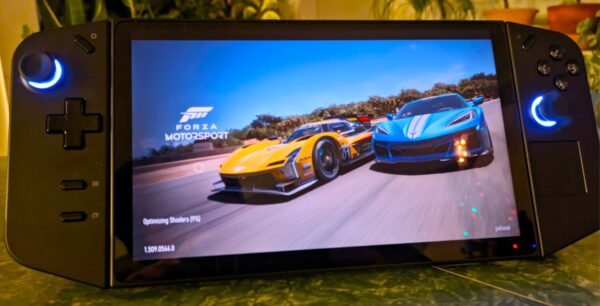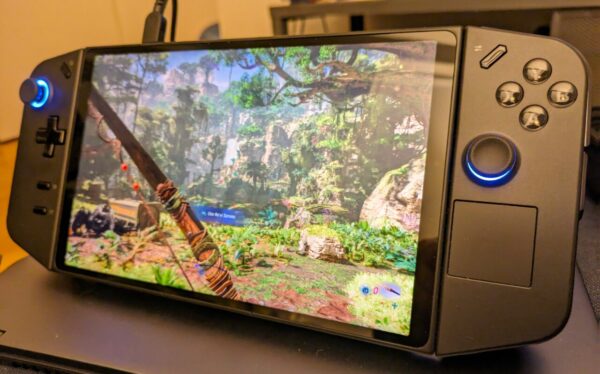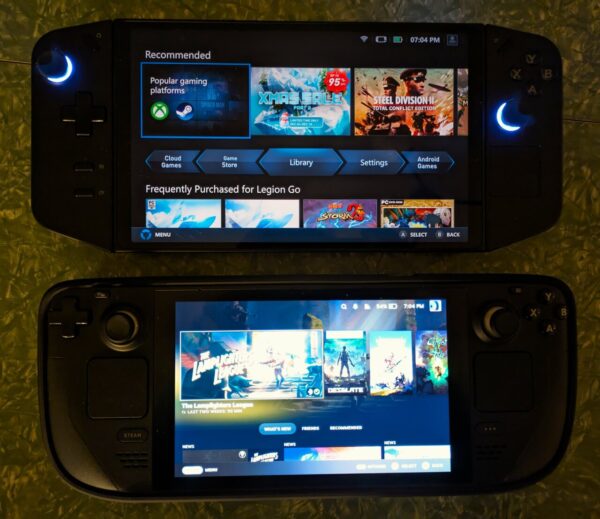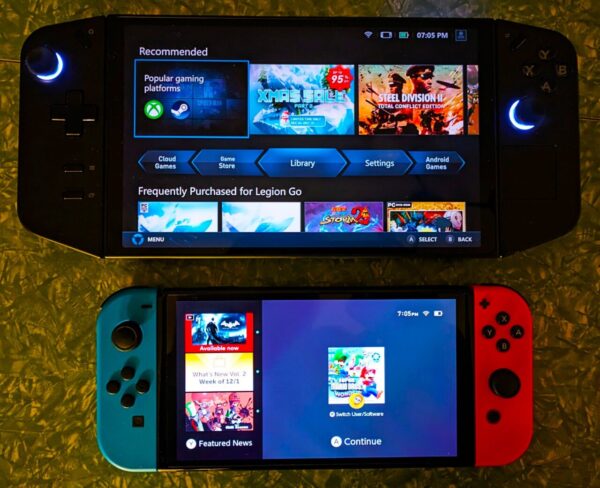In all honesty, I don’t know what to make of the Lenovo Legion Go. If I’d written this review a week ago, it would’ve been the most ridiculously negative review imaginable – as in, I don’t think I would’ve had a single nice thing to say about it. Even now, I still have some major issues with it. But I don’t hate it with every fibre of my being anymore, so that has to count as progress, right?
Undoubtedly, the Legion Go’s biggest issue is that it’s absolutely terrible out of the box. Everything about it seems half-baked and half-finished. The launcher doesn’t even come pre-installed; you need to download and update it. After that, you have to install each and every one of the launchers you want – and the game doesn’t make that easy, either. The game links you to the main pages for Xbox, Steam, Epic, and so on, and it’s up to you to seek out the launchers for PC Game Pass and the other store launchers. And even when you get them installed, their performance was pretty hit-or-miss.
On top of that, I’m not exaggerating when I say that I could barely get anything to run on the Legion Go at first. Some games, like Horizon: Zero Dawn or Sonic Frontiers – both verified for the much weaker Steam Deck, mind you – would flicker onto the screen and then shut down immediately. Similarly, I was able to get all the way to the first screen of Ratchet & Clank Rift Apart, before getting a message that the system wasn’t powerful enough to run it and the game was shutting down. Others would start – like Ghostwire Tokyo, for example – but their performance was so miserably awful that it was like I was watching a slideshow, and I had to quit in frustration. Even when I was able to get a game running, it was the game’s graphics settings turned down to a comical level: for instance, by the time I was able to get The Outer Worlds to run, it was so bad that the game looked identical to how it did when it was ported to the Switch.
And, somehow, despite this terrible performance – despite the fact I barely got to play anything – the battery performance was equally abysmal. The few times I tried playing unplugged, the battery would drain rapidly, and I’d find myself with a half-full indicator after less than half an hour. Not exactly a system you’d be wanting to take on long road trips. Or short road trips. Or even a drive around the block, really.
Basically, it felt like whiplash going from the ROG Ally – even the weaker Z1 version – where everything worked near-perfectly right out of the box, to the Legion Go, where literally everything about it was terrible from the get-go.
After some tinkering in the Legion Go’s settings, however, I was able to get it to work…mostly. After pushing the refresh rate way down and lowering the screen resolution, games started working a little better. The battery life was still atrocious, but at least I was able to get beyond loading screens.
It should be said that the games definitely weren’t lookers, at this point. Games like Far Cry 6 and High On Life looked like shoddy ports from a previous generation, rather than games from the last few years; the textures looked a little fuzzy, and movements were a little blurry, but no longer were games unplayable by any stretch of the imagination. WIth the settings turned down, I was even able to get Star Wars Jedi: Survivor up and running – not well, to be sure, but given the game’s reputation on PC, I was impressed that it even worked as well as it did.
(On the flip side – while still talking about unoptimized PC ports – I also tried playing Immortals of Aveum.This was a mistake. While the game’s recent patch may have improved its PC performance on some systems, that wasn’t the case on the Legion Go. The fan started blasting and everything was either at or near 100% in terms of CPU usage, and I quickly turned the game off rather than risk frying the Legion Go.)
What’s frustrating about all this is that there are undeniably some good aspects of the Legion Go. The screen, for example, is pretty solid: it’s an 8.8 inch QHD display, and I have no doubt that if the games ran better, they’d be able to take full advantage of that. At the same time, despite having just about the biggest display you can find on a handheld without getting into the realm of vaporware, the Legion Go is surprisingly comfortable in the hands: it’s nearly 200 grams heavier than the Steam Deck, but it still doesn’t feel as bulky. Don’t get me wrong, it’s still huge – and the difference feels even more pronounced going from the ROG Ally to the Legion Go – but the ergonomics aren’t absurd.
(At least the ergonomics aren’t bad in terms of holding it in your hands. I was a lot less impressed by the thumbsticks, which feel kind of small on such a big device. I’m not usually someone who notices how thumbsticks feel, so the fact they stood out for me on the Legion Go in a negative way probably doesn’t speak well of them.)
There are also some other neat ideas here. The Legion Go’s design was clearly inspired by the Switch, as evidenced by the fact you can slide off the two sides of the device, prop up the screen, and play games with the controllers in your hands. The downside is that this means that the controllers suddenly become a lot more complicated to use, with all the extra buttons plastered all over the things, but it’s still an interesting evolution of what the Switch came up with years ago.
It was also neat to see that the carrying case has a little hole that allows you to keep the Legion Go plugged in, even when it’s snugly inside the case. I’d be a little wary of keeping it plugged in for long, given that the system wakes up from sleep easily and the fan seems to start blasting at random times, both of which seem like bad ingredients if you combine them with a closed space, but I still give the Legion Go credit for making it so easy to charge up the system – which is especially important, given how bad the battery life is.
Of course, when things like a carrying case are the highlights of a system, it doesn’t exactly say much about the system itself. We’ll be running a comparison guide of the three main handheld systems – the Legion Go, the ROG Ally, and the Steam Deck – later this month, and even though I haven’t started writing it yet, it’s pretty clear that the Legion Go has a lot of ground to make up before it can even come anywhere close to either of those handhelds. Both of those other systems are much easier to use out of the box and require far less tinkering to get solid performance out of them. Buying the Legion Go at this point means putting your faith that things will improve substantially in the not-so-distant future, while also ignoring the fact that the ROG Ally and the Steam Deck have gotten those growing pains out of the way, and offer a much better performance right now. If you absolutely need a bigger screen and you have plenty of money to spend, the Lenovo Legion Go might be worth picking up, but as it stands, it’s awfully difficult to recommend it right now.
Lenovo provided us with a Legion Go for review purposes.

